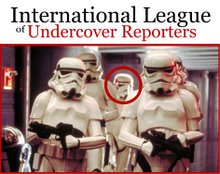FAQ about the Black Swan.
1. What can you tell us about the shipwreck code-named the "Black Swan"?
The site is in the Atlantic Ocean in an area in which a number of Colonial shipwrecks were lost. We are not certain of the nationality, size or age of the site at this point. We have some interesting evidence that tends to point to a specific shipwreck, but we do not intend to discuss this publicly until we have had a chance to review contemporary records and conduct extensive analysis of the artifacts and coins that have been recovered to date.
For site security and legal reasons, we are not prepared to give the location, depth or any other information about the site, or even which ship or ROV system was used in the recovery.
The recovery was in conformity with Salvage Law and the Law of the Sea Convention, beyond the territorial waters or legal jurisdiction of any country. We do not believe that the recovery is subject to sovereign immunity by any nation pursuant to the Law of the Sea Convention.
If we are able to confirm that some other entity has a legitimate legal claim to this shipwreck when - and if - the identity is confirmed, we intend to provide legal notice to any potential claimant. Even if another entity is able to prove that it has an ownership interest in the shipwreck and/or cargo (which we do not consider likely based on our evidence to date) and that they had not legally abandoned the shipwreck (also unlikely), Odyssey would apply for a salvage award from the Admiralty Court. In cases such as this, salvors are typically awarded approximately 90% of the recovery.
2. What can you tell about the coins that were recovered?
The silver coins that were recovered weighed over 17 tons, and the preliminary count puts the number at over 500,000 coins. We have already conserved about 6,000 of them and we are very pleased with the condition of the coins. They represent a wide variety of dates, origins and varieties which we believe will make many of the coins attractive to both numismatists and collectors alike.
Hundreds of gold coins were also recovered from the site. Most of these coins are in mint state condition and also reflect a wide variety of years and mints.
Additional worked gold and other artifacts were also recovered, and we are studying them for additional clues which might lead to the ultimate identification of the site.
3. Are there more coins on the site?
It is possible that we will find additional coins during the next phase of the excavation.
4. Will Odyssey be returning to the "Black Swan" site?
At this point, we are planning a major expedition back to the site that may correlate with an announcement of the identity of the shipwreck (if we are able to prove it to our satisfaction.) We anticipate that a significant world-wide media event will be associated with this return to the site.
5. Are there still artifacts remaining on the site?
Yes, there are still a large number of artifacts on the site. We are holding off further excavation until we can confirm the identity of the shipwreck based on the artifacts and evidence recovered to date. At that point, we will develop the archaeological plan for additional excavation and recovery.
6. How were the coins and artifacts shipped?
They were shipped to the United States. We are not discussing when they were shipped, the method by which they were shipped, nor the locations from which they were shipped or where they arrived. We are also - for obvious security reasons - not disclosing where they are now.
7. Why all the secrecy about this recovery?
We have been saying for quite a while now that in most cases we may not announce shipwreck finds until after recovery and assertion of legal claims. There are political, legal and security reasons for taking this approach, and they vary from site to site.
In our ongoing effort to bring credibility to commercial deep ocean archaeology, we think that is best to reduce speculation about the identity and value of shipwrecks. One way to do this is to announce the identity of shipwrecks AFTER we prove to our satisfaction which ship they are. In order to reduce speculation about the values, we think that where possible, waiting until after a collection is recovered to provide an estimate of the projected retail values will provide a more accurate assessment.
There will be shipwrecks like the HMS Sussex, which require relatively public negotiations with sovereign governments, but the public nature of these projects can lead to wild media speculation, as well as Internet blogging and message board crazy conjecture with little basis in reality. Our goal is to provide the most accurate information possible to the public about our finds, and in many cases, that will happen after the completion of recovery operations.
The majority of our shipwreck projects in the future will follow the "Black Swan" model, where our goal will be to release minimal information about the project until after the fact, and even then to focus on releasing facts, not conjecture.
8. What is the potential retail value of the coins that have been recovered?
We have numismatists examining the coins in order to help us get our arms around this collection. Obviously no one has ever seen a shipwreck collection of this magnitude before. The preliminary opinion from one of the numismatists who has had the most experience with sales of coins from the SS Republic - and has already inspected some these coins firsthand - is that the condition and broad range of coins on this site suggests a very wide range of retail values. He has recommended offering the coins at retail prices ranging from a few hundred dollars up to $4,000 per silver coin. The gold coins are estimated to bring substantially higher numbers. Of course, this is preliminary suggested retail pricing, and the actual sales price of coins may be different from this range. (Note: Retail prices would not include sales and marketing costs, so the entire retail sales amount would typically not accrue directly to Odyssey).
9. How long will it take to conserve the entire collection and what is involved with the process?
Again, no one has ever conserved and documented a collection of this size before, so we are exploring our options now. Obviously our experience with the 50,000 coins of the SS Republic was very useful - and the lessons learned on that project are already proving valuable.
We have already conserved about 6,000 coins from the site, testing various methods of conservation in order to determine the best process. Some of these were quite time-consuming, but have produced fantastic results that warrant the effort.
As with the SS Republic collection, each coin will be individually conserved, documented, photographed, graded and certified. It will be a massive undertaking, but obviously necessary if we are going to do this right.
10. When will the coins be available for sale?
The timing of the first coin sales will depend on a number of factors, including the conservation process, legal issues, perfection of title, identification of the shipwreck and our scheduled release of media about the shipwreck.
We have set up a place on our website, www.shipwreck.net, where people interested in reserving coins from the shipwreck for their collections can register for notification of the process and marketing calendar.
11. Will you sell all the coins?
Odyssey has a policy of keeping a permanent collection sample of the different varieties of coins that are sold for study and display purposes.
12. How will such a huge quantity of coins affect the marketplace?
It is a common misconception that a large number of coins coming into the marketplace will depress retail values. Even though it is counter-intuitive, experience suggests otherwise. In cases where large hoards of coins have come available, collector interest has often actually pushed values up.
Prior to Mel Fisher's discovery of the Atocha, the 1622 Spanish shipwreck lost off the Florida Keys, common Spanish "Pieces of Eight" would often sell for less than a hundred dollars.
In spite of bringing over 150,000 coins into the marketplace, Fisher's organization successfully retailed these coins at prices ranging from $500 to $1,500 based on the added collector interest generated by the publicity surrounding the find.
When the LaVere Redfield estate hoard of 400,000 U.S. silver dollars dating from 1878 to 1935 came into the market, it was one of the largest quantities ever released outside the U.S. Treasury. By marketing the coins directly to the public, over three years Paramount International Coin Corp. successfully sold them at the prevailing retail prices with no disruption to market values.
In 1983 Continental - Illinois Bank of Chicago sold off from its vault 1.5 million U.S. silver dollars dating from 1878-1904. The coins were distributed to a carefully chosen network of retail dealers, who sold the coins directly to the public. There was no decline in the market values of these coins during the two years they were dispersed into the market. In fact, wholesale prices actually increased between 1983 and 1985.
The U.S. Mint estimates that there are about 130 million coin collectors in America. By providing a way for the public to participate in major finds, and generating excitement about a shipwreck, we believe that large numbers of coins can be widely distributed with no negative impact on market values.
13. What about archaeology? Does Odyssey intend to excavate this site in an archaeologically-sound manner?
Yes. The "Black Swan" site was the subject of an extensive pre-disturbance survey prior to any excavation. Recovery of the artifacts recovered to date has been accomplished under the supervision of two archaeologists and has followed rigorous archaeological protocols.
14. What does the "Black Swan" shipwreck mean for the Company?
Pioneering a new industry is daunting. One challenge is convincing the world that one success was not a fluke. The SS Republic shipwreck has already produced over $33 million in revenues for us during the first three years of sales. We still have well over half the inventory remaining, so this has been a great success for the Company. A second major shipwreck recovery, especially one of this magnitude, suggests that Odyssey's business plan is more than just a dream.
Odyssey is fortunate to have support from some of the largest investment funds in the world, including some who have shown that they are interested in Odyssey as a long term investment, not a short term trading opportunity. This successful recovery appears to justify their investment strategy and belief in the Company's management and business plan.
15. Who are Odyssey's media partners?
Odyssey is currently in discussions with media partners for film, television, book and other ancillary rights. We anticipate that the "Black Swan" will prove to be one of the most widely publicized shipwrecks in history, and we are selecting media partners that can contribute to telling the story of this amazing project, and who match Odyssey's own branding standards.
16. Is it possible for you to conduct search or recovery operations with ships other than those owned by the Company?
The Odyssey Explorer is our primary recovery ship, but we own a second ship that conducts primarily search operations. In addition, the Company from time to time may charter additional ships for augmenting search or recovery activities. The Company has a complete additional search system, and two complete additional ROV systems which can be used on other ships of opportunity. For security reasons, we may not disclose activities undertaken by charter ships, nor the projects they are working on.
17. What does the future hold in store for Odyssey?
Odyssey is awaiting the appointment of two Spanish archaeologists prior to resuming operations on the Sussex project.
In addition, Odyssey has several additional projects in various stages of completion, at least three of which could come to fruition during 2007.
While it seems unusual that there could be three years in a row with no announcements of major finds, then the possibility of multiple recoveries in one year, it is important to remember that during those three years, we completed thousands of square miles of searches, and have inspected hundreds of targets...with many more to inspect. You never know when the next target is the one that you are looking for.
18. Why is the shipwreck code-named "Black Swan?"
A "Black Swan" as defined by author Nassim Nicholas Taleb in his book "The Black Swan" is a highly consequential but apparently unpredictable event. While its timing - or even possibility of its existence - cannot easily be forecast, a "Black Swan" event is often explained after the fact by pundits as though it should have been predictable.
At Odyssey we have always run our business with an eye continually scanning the horizon for "Black Swans" of possible positive consequence, while hedging against the negative ones. We are always searching for asymmetries where favorable consequences are more likely than unfavorable ones, and planning for the probability that unpredictable events will affect our business. Our code name selection for this project is predicated on the concept that this operation exemplifies a "Black Swan" event to the public, even though it was actually anticipated in Odyssey's business plan.
We hope for many more like it - and are planning appropriately.
Source : shipwreck.net (site d'Odyssey Marine Exploration)
Inscription à :
Publier les commentaires (Atom)






Aucun commentaire:
Enregistrer un commentaire